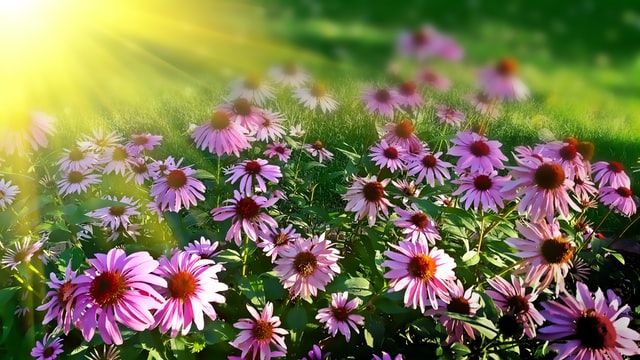
Most of the time, even inexperienced gardeners understand the importance of fertilizer. Fertilizers provide essential nutrients to the soil. Supplying your plants with their essential nutrients is crucial. Otherwise, they won’t grow to their full potential. However, plenty of modern gardeners would rather avoid using traditional fertilizers. While more studies still need to be conducted for it to be conclusive there is concern that traditional fertilizers such as nitrogen fertilizers may be carcinogenic in nature. Fortunately, there are several effective alternatives. If you’d like to grow plants without fertilizer, try a few of these. They should do the trick.
1. Freshly Ground Bone Meal
Bone meal is made by crushing up the bones of animals. Typically, it’s created whenever animals are processed to produce meat. Their bones are excellent at providing calcium to the soil preventing blossom end rot. Also, it can be a great source of phosphorus (containing almost 15%) which is essential for plant growth to skyrocket.
Nitrogen is also an essential nutrient for plant growth. While a large amount of nitrogen may be something to worry about, the bone meal contains about 0.7 to 4% of nitrogen depending on which brand you buy making it better than traditional fertilizer. Nitrogen is a major part of the chlorophyll found in plants. Without adequate nitrogen, your plants will not be able to grow proteins.
Phosphorous, calcium, and nitrogen are essential nutrients for most plants. Without them, they won’t grow well. Plus, by using bone meal, animal products won’t go to waste. About half a cup should be sufficient for most plants. Scatter it around the plant, and then gently work it into the ground. That way, those nutrients will find their way into the soil.
2. Food Grade Hydrogen Peroxide
35 food grade hydrogen peroxide is useful in more places than just disinfecting the kitchen. Unlike traditional hydrogen peroxide, food grade is free from chemicals like acetanilide, phenol, and sodium stannate. Putting some of it into your plant’s soil will boost its oxygen levels. Plus, hydrogen peroxide is great at inhibiting the growth of bacteria. Thus, protecting your plants from potential infections. It can also protect against fungal diseases and pests having the added benefit of an insecticide.
Plants also seem to increase their rate of nutrient uptake when exposed to it. So, they’ll absorb even more nutrients from the soil than usual. Shockingly, this can even impact the plant’s roots, helping them grow faster. The faster your plant’s roots grow, the more nutrients they’ll reach. As a result, they’ll need less fertilizer than they would have otherwise.
3. Discarded Coffee Grounds
Do you enjoy brewing coffee in the morning? Lots of people can’t start their day without it. Still, are you making the most of those discarded coffee grounds? Instead of throwing them away, toss them around your plants. Pretty much all organic materials work well as a fertilizer, coffee notwithstanding.
Coffee grounds contain quite a bit of phosphorus and potassium. Potassium help plants absorb water and reduce the effects of drought. Coffee grounds also contain about 2% nitrogen by volume. These nutrients are often deficient in the soil, limiting your plant’s potential. By adding coffee grounds to it, you’ll avoid any of those deficiencies. Plus, you’ll be keeping something out of the landfill.
Unlike common myths, used coffee grounds are not acidic to the soil. The acid within coffee is water-soluble so most of the acid leaves the grounds when it is brewed. Coffee grounds are also close to a neutral PH level making them ideal for the soil.
4. Composted Manure or Bat Guano
Composted manure is a common fertilizer alternative. Make sure that the manure you purchase was already composted or you plan on composted properly. If manure is not properly composted you will have an increased risk of your crops being contaminated with E.colli. Properly composted manure contains nutrients such as nitrogen, will retain water, and will also kill pathogens and weed seeds.
Bat Guano is bat dung collected from bats that only consumed fruit and insects. Their waste products are packed with nutrients ideal for plants. This alternative, while unorthodox is indeed effective. It can protect your plants from root-knot disease and act as a natural fungicide. Typically, its N-P-K (nitrogen, phosphorous, potassium, or potash) ratio is 10-3-1.
You can either spread the bat guano on top of the soil, work it in or create a bat guano tea which is a popular method. Creating bat guano tea involves letting a cup of dung sit in a gallon of water overnight and straining it over the plants.
5. Fish Emulsions
Hundreds of years ago, Native Americans would place discarded fish underneath their corn. They may not have known why it was so affected, but the results spoke for themselves. Today, you don’t have to bury the whole fish. Instead, you can simply get some fish emulsions. In most cases, they are an NPP ratio of 5-2-2. That means your plant will get its essential nutrients from this nontraditional fertilizer.
Today there are deodorized fish emulsions available, meaning your yard won’t have to smell like a dockyard. Even better, you don’t have to dig into the ground. Applying fishing motions is as simple as using a foliar spray. For the best results, try spraying your plants during the early spring. That’ll give them everything they need to grow big and strong before the winter.
6. Natural Compost
Best of all, natural compost contains just about everything your plant needs. You can even create compost at home by yourself. Research how to create a compost pile, and then start doing it. Once you’ve got a decent amount, spread it around your garden. Then, till the soil lightly. That should help get the nutrients into the ground. That way, your plants will be able to reach it.
Compost has some of the highest nutrient density of all, too. Meaning, you won’t need to use a lot of it to get good results. We recommend applying it at the beginning of the planting season. Usually, seedlings need additional nutrients more than mature plants. Plus, by the time the plants mature, those nutrients will be worked into the ground.
Types of Natural Compost
There are three main types of compost: Cold, hot, and vermicompost. What is the difference? Hot composting requires more work than cold compost but pays off in one to three months. Cold compost can take over a year to prepare. For vermicompost, simply add worms to your compost. The worms will consume the food scraps and produce nitrogen-rich waste. Make sure you are using “red-wigglers” if you decide to use this method of composting.
What Should You Add to Compost?
Common items you may add to compost are:
- Dry leaves and grass clippings
- Coffee grounds
- Eggshells
- Sawdust
- Shredded newspaper
- Scraps of vegetables and fruits
- Nutrient-Rich Manure
Growing Healthy Plants Without Traditional Fertilizer
Gardening is a great hobby, and it’s not too difficult to learn. Even people who dislike traditional fertilizers can enjoy a garden. Fortunately, there are many great alternatives to traditional fertilizer. Try some of these alternatives and see a great improvement in the growth of your plants.


